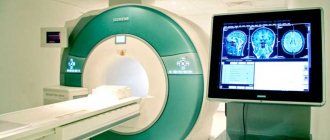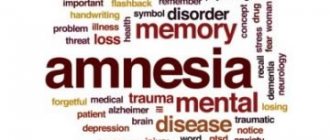Stuttering in children and adults, or logoneurosis, is a speech disorder that causes serious discomfort to a person when communicating with other people.
Those who stutter are aware of what they want to say but are unable to do so. As a result, people who stutter repeat or prolong a word, syllable, consonant or vowel sound, and also pause (short, long) during communication because they have reached a problematic word or sound.
Among young children, stuttering may be perceived as normal—a natural part of learning language skills. Stuttering most often occurs in children between the ages of 2 and 6, when they are developing language skills. A child stutters if his speech and language abilities are not sufficiently developed. Most children are able to outgrow stuttering during development, unless it is pathological.
What kind of doctor treats stuttering?
Treatment of logoneurosis and other speech disorders (defects) is the competence of a speech therapist. More than 70 million people worldwide suffer from such problems. On average, approximately 5-10% of all children will experience stuttering at least once in their lives, but most usually outgrow it within a few months or years. Early intervention can help children overcome stuttering.
According to the study, every fourth child has a speech problem that can persist into adulthood and develop into various speech disorders. This makes it difficult to communicate with others, which often affects a person's quality of life and interpersonal relationships.
What could be the cause of stuttering?
The main causes of stuttering in children most often come down to psychological problems or neurological diseases. Sometimes stuttering is considered a chronic disease that persists into adulthood. Less common are speech difficulties that arise after emotional trauma (psychogenic stuttering).
Often, the first signs of stuttering in a child appear between the ages of 18 and 24 months. During this period, children's vocabulary gradually increases, and the first attempts to link words into short or long sentences are recorded. As children develop their vocabulary, many children may stutter. In most cases, this lasts from several weeks to several months. In many cases, stuttering goes away on its own by the age of 5, unless it is a speech pathology.
How to cure stuttering if it is a pathology? Stuttering can be treated and for this it is necessary to visit a speech therapist who will select speech or language therapy depending on the patient’s diagnosis.
A few scientific words about logoneurosis and logophobia
Logoneurosis (this is the scientific name for stuttering) is characterized by frequent repetition, prolongation of sounds/syllables or frequent stops, hesitation in speech, which breaks its rhythmic flow. Constant signs of stuttering are impaired speech breathing, facial muscle spasms (tics), tension in the chest area, and sweating. In general, the mechanism of stuttering is associated with a conflict between the right-hemisphere rhythm and the left-hemisphere meaning. In even simpler words: stuttering is the result of inconsistency between the processes of thinking and speech.
Why is this happening? Well, scientists have several explanations for this.
From the age of one to six years, when the formation and development of speech occurs, it is particularly sensitive to the environment. From one and a half to three years, a child enters one of the critical periods of development of the nervous system, when nerve cells “mirror” everything that surrounds them: the more “negative” the environment and the more sensitive the child, the higher the risk of stuttering. In addition, other factors can cause the occurrence of logoneurosis:
- perinatal pathology of the nervous system, infectious diseases, injuries, features of the respiratory system;
- genetic predisposition (associated with mutations in the GNPTAB, GNPTG and NAGPA genes);
- a common situation: overtrained left-handedness, when a left-handed child is forced to write with his right hand;
- severe psychotraumatic situation, chronic stress;
- the presence of a relative who stutters next to the child, whose style he adopts, etc.
Which of these will ultimately serve as a trigger for stuttering? Hard to tell. This is such a mysterious phenomenon that one cannot look at it from a flat, clumsy point of view. And therefore, the standard methods that speech therapists use also do not always help in healing.
One way or another, depending on the reasons, stuttering is divided into neurological, which is associated with organic causes, and neurotic, associated with a nervous state and, as a consequence, with fear of speech (logophobia). The latter is of particular importance and is worth talking about separately.
Logophobia arises as a consequence of logoneurosis. At the initial stage, while delivering a speech, a person begins to become restless. At the next stage of development of logophobia, remembering negative experiences, the person already expects that he will not be able to speak out properly and experiences fear before starting a conversation.
“Hidden stutterers”, who have strong self-control, try in every possible way to veil their defect, pronouncing the speech to themselves in advance and replacing problematic fragments in pronunciation with more suitable ones - extra sounds and sometimes words are interspersed into the phrase. Such adaptive tricks only complicate the picture, driving stuttering inward and “fueling” the fear of speech.
Gradually, even the thought of having to talk begins to scare the person. Fear of communication with the expectation of speech failures strengthens a person’s fixation on stuttering. At some point, a vicious circle may arise where one thing flows into another, turning an initially mild process into a serious pathology.
How to determine if a child has a stutter?
Only a speech therapist can determine whether children have pathological stuttering. Often a child stutters when excited due to:
- entering a new environment (moving, moving to a new kindergarten or school);
- first public appearances.
If speech hesitations are isolated incidents, parents need not worry. When they recur frequently, you need to make an appointment with a pediatric speech therapist.
The psychosomatics of diseases associated with speech defects can be different and depend on the impressionability of the child, his character, the presence of diseases of the nervous and other systems. Signs and symptoms of stuttering may include:
- difficulty in pronouncing the beginning of a word, phrase, sentence, as well as the continuation of a word, sounds in a word, or repetition of a sound, syllable, word;
- brief silence for certain syllables or words or a pause in a word (broken word);
- adding additional words if there is difficulty moving to the next word;
- manifestation of excessive tension, embarrassment or anxiety in conversation;
- other limitations in the quest to achieve effective communication.
Why do adults start to stutter?
To determine the reason why people stutter, it is necessary to contact a doctor immediately after detecting speech problems and begin treatment. A speech disorder affects less than 1% of all adults. According to the American Speech-Language-Hearing Association, some people who stutter appear extremely tense or out of breath when speaking. Their speech can be completely “blocked” (stopped) under the influence of many factors.
There are many reasons why people stutter. This often occurs due to head injuries, anxiety, and also due to untreated diseases in childhood. Also, the causes of stuttering in adults can be related to lifestyle, career and family troubles.
What to do if a child stutters?
If a child stutters, you need to visit a speech therapist and determine the cause of what is happening. There are different types of stuttering, and most of them occur due to disruptions in the functioning of the nervous system. Stuttering due to neuroses can be:
- neurotic, when speech problems are associated with psychological trauma (stress, fear, fright), learning another language;
- neurosis-like, characterized mostly by genetic and other diseases.
The treatment of logoneuroses is selected by the doctor depending on the diagnosis and the degree of progression of speech defects (weak, moderate, strong). The frequency of stuttering is also important: constant, periodic, chaotic, cyclical. Sometimes speech problems depend on the situation and manifest themselves depending on its repetition.
Classification of causes of stuttering
The exact causes of stuttering are unknown today; it is assumed that this is a combination of certain factors that, due to a complex effect, trigger complex pathological mechanisms that disrupt the functioning of speech centers. In this case, a mismatch occurs in the work of the auditory and speech centers, a delay in the feedback signal, which causes a spasm in one or more parts of the speech apparatus.
Usually all reasons are divided into
- predisposing (these include the genetic and neurological characteristics of a given person)
- provoking (stress: sometimes a slight fright or severe shock, severe somatic illness, etc.)
Often stuttering occurs “gradually”, unnoticeably. Parents are “guessing” but cannot find one noticeable provoking cause.
You need to be very attentive to the child’s speech if there is already a stutterer in the family. If this is a “blood” relative, then the factor of genetic predisposition already exists and the factor of imitation is added. But even if this is a “not blood” relative, then the imitation factor alone can also become provoking.
But the most important thing is that thanks to the technique of L.Z. Harutyunyan, it is possible to achieve fluent speech, regardless of whether the stuttering is neurosis-like (genetically determined, organic) or neurotic (functional).
Is stuttering treatable in children and adults?
If an adult or child stutters and drags out words, you need to undergo treatment with a speech therapist. If you consult a doctor in a timely manner, your speech can improve or get rid of the problem altogether (depending on the diagnosis). In young children, after determining the cause of stuttering, the doctor must evaluate the stuttering in speech: short-term or long-term. In most cases, stuttering is assessed using a series of tests, observations, and interviews.
Evaluation of older children and adults is more focused on determining the severity of the disorder and the impact the speech disorder has on the person's ability to communicate and perform daily activities appropriately.
Stuttering is often characterized by problems with speech motor skills (such as sensory and motor coordination). In this case, children and adults who stutter may benefit from treatments such as speech therapy, the use of electronic devices to improve fluency, or cognitive behavioral therapy.
Logoneurosis (stuttering in adults)
Stuttering is a complex speech disorder that manifests itself in the form of repetition of individual sounds, syllables, words, or in the form of increased pauses in speech and prolongation of individual sounds.
Within the framework of the domestic psychological and pedagogical classification of speech disorders, “stuttering” belongs to the category “impaired use of means of communication,” that is, stuttering is a non-systemic speech disorder that does not affect internal speech (unlike aphasia in adults and alalia in children, although some manifestations may be similar).
There are different definitions and classifications of stuttering.
Types of stuttering in adults
From the point of view of manifestations in speech, stuttering is divided into:
- clonic (frequent repetition of one element due to repeated spasms of the muscles of the speech apparatus),
- tonic (pulling out a separate element of speech due to prolonged muscle contraction),
- mixed (a combination of both mechanisms of stuttering in speech).
The concept of “logoneurosis” is often used as a synonym for the term “stuttering,” but this is not always true.
Causes of stuttering
The causes of neurotic stuttering (logoneurosis) in adults should often be sought in childhood. As a rule, logoneurosis manifests itself in childhood during the development of phrasal speech against the background of single or repeated emotional stress. The presence of pronounced disturbances in the functioning of brain structures according to functional diagnostics (EEG) is not noted, or such disturbances are minimal. Speech hesitations in such children are largely related to the characteristics of communication and the current psychological situation. The condition of patients with stuttering largely corresponds to the criteria of neurosis, which is why the corresponding name appeared - logoneurosis.
A neurosis-like form of stuttering occurs as a result of a neurological disorder, leading to both a violation of gross and fine motor skills, and a violation of articulation. Neurological disorders often mean the consequences of intrauterine hypoxia, the consequences of complications during pregnancy, as well as diseases and injuries in infancy. Due to disturbances in the functioning of certain brain structures, at the stage of speech formation, the child faces difficulties in pronunciation, which develop into stuttering. This type of stuttering in childhood is often combined with other speech and cognitive disorders. With this form of stuttering, neurotic reactions can also occur, which add additional mechanisms of pathogenesis such as logoneurosis.
In adulthood, stuttering often has a compensated form, when a person has already adapted to his own speech characteristics or has learned to control them. Symptoms of logoneurosis or stuttering can worsen due to stress and overwork in people who have never stuttered.
Stuttering-like errors in adulthood can appear after a stroke (stroke), traumatic brain injury (TBI) or brain surgery (removal of a tumor, hematoma). In this case, there is no need to talk about stuttering (logoneurosis) as such - we will talk about a speech disorder such as aphasia or dysarthria.
Treatment
At the initial appearance of any speech disorders in adulthood, you should immediately consult a neurologist to determine the cause of the disorder and draw up a plan for further rehabilitation.
In the case of stuttering or logoneurosis in adulthood, it is also necessary to determine its type and causes, and to establish the degree of influence of neurological and psychological factors on speech activity.
A neurologist diagnoses the state of the nervous system using functional diagnostic methods (EEG, ultrasound). Diagnosis of the state of the speech sphere and subsequent speech classes are within the competence of the speech therapist. If necessary, a psychologist, neuropsychologist and psychotherapist are also involved in working with the patient.











